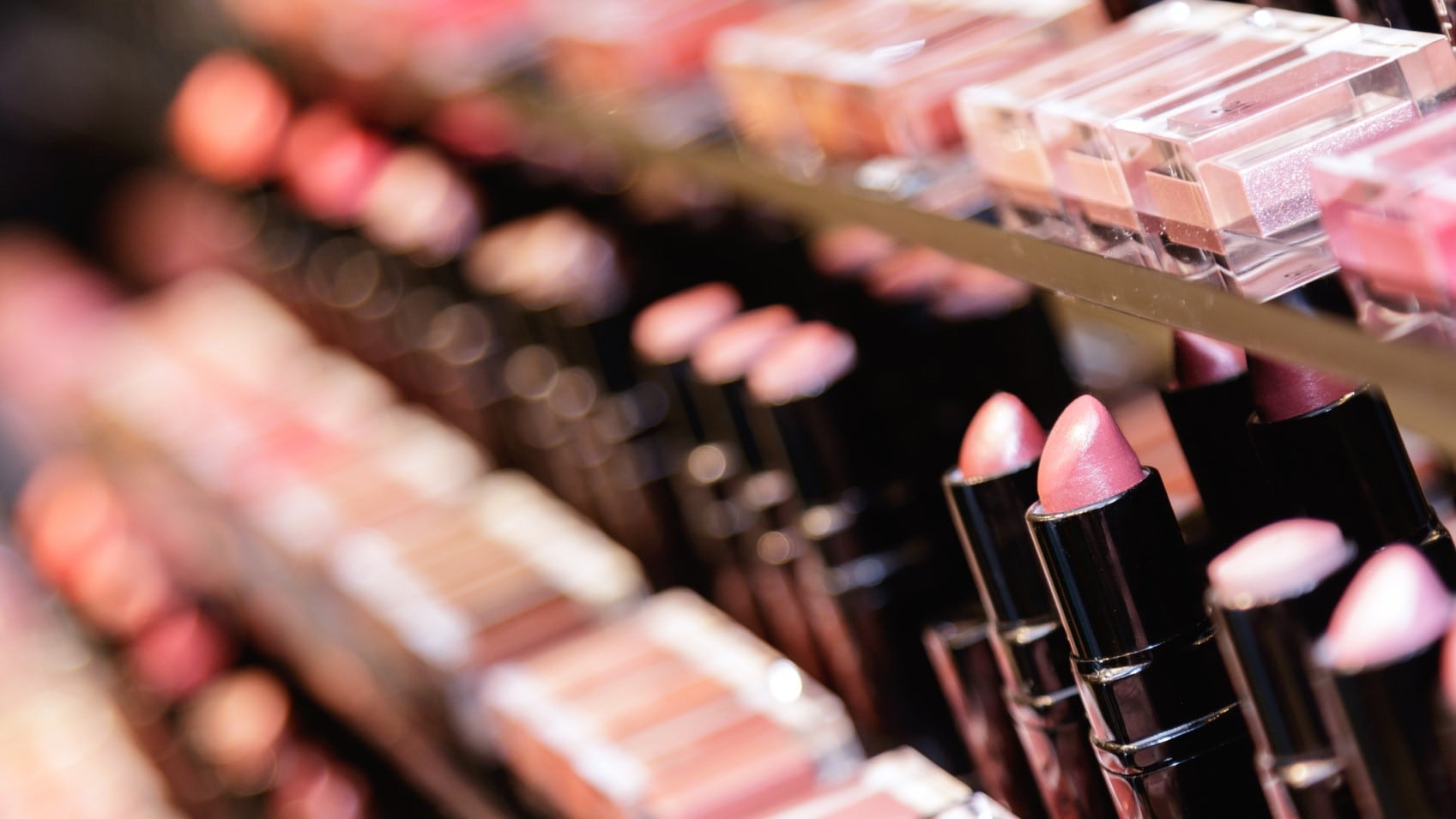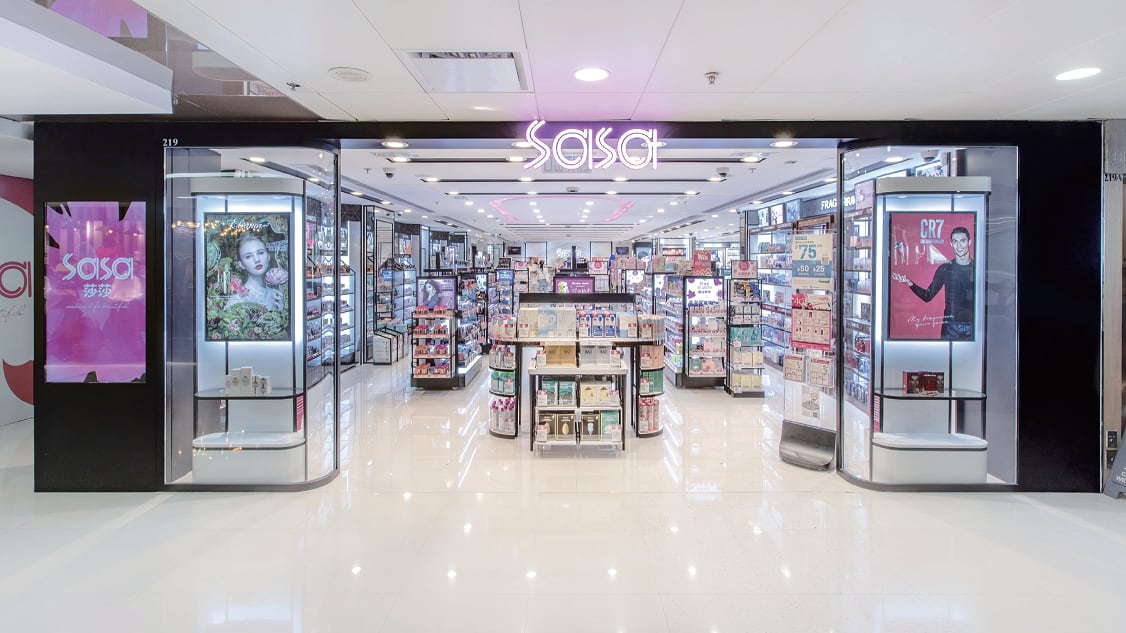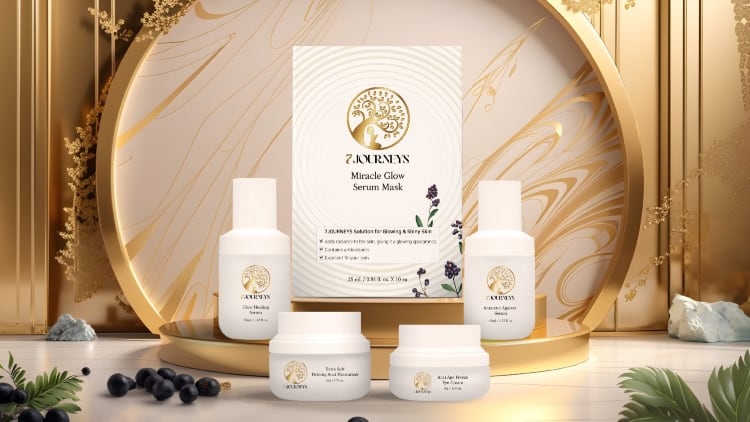The COVID-19 pandemic brought about notable disruptions to Hong Kong. Compounded by the aftermath of the 2019 protests, Hong Kong's retail sector experienced a downturn due to prolonged periods of social distancing measures and travel restrictions.
According to market research provider Euromonitor International, Hong Kong’s beauty market was valued at HKD28.9bn in 2023.
Before the pandemic, in 2018, it was valued at HKD36.1bn. The most significant drop in recent years was from 2019 to 2022 when it fell by 37% to HKD20.8bn.
Since then, it has steadily been on the rise. Last year, it grew by 17.6% compared to the 5.2% growth from the previous year, signalling that the market was well on its way to recovering to pre-pandemic levels.
Like China, Hong Kong’s economy was impeded by a sluggish reopening. The events highlighted the vulnerability of business and underscored the importance of agility in navigating turbulent times.
Like many other cities, the shift towards online shopping in Hong Kong accelerated, and beauty brands ramped up their online presence, offering virtual consultations, and seamless delivery services to cater to evolving consumer preferences.
In 2022, Hong Kong’s e-commerce sales totalled HKD18.8bn compared to HKD3.1bn in 2018.
Despite enduring some of the toughest pandemic restrictions for over two years, Hong Kong’s beauty industry demonstrated remarkable resilience and adaptability in the face of adversity.
“Throughout the pandemic, the beauty industry in Hong Kong has displayed resilience in navigating the challenging circumstances… While the region has experienced periods of ups and downs, consumers in Hong Kong remain resilient and adaptable,” said Eric Lui, general manager of L’Occitane Hong Kong.
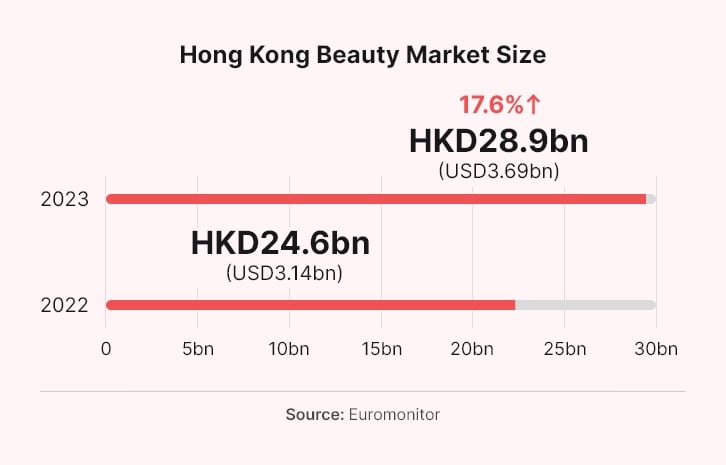
A recovery in progress
As part of the city’s moves to kickstart its economy, the government rolled out plans to stimulate spending, including the consumption voucher scheme starting in 2021.
These vouchers, which were worth up to HKD10,000 (USD1,278) could be used at high street retail stores, department stores, beauty salons, restaurants, and online platforms.
Additionally, the Hong Kong Tourism Board launched the global campaign ‘Hello Hong Kong’ in February last year to welcome the return of international travellers.
As part of the promotional event, 500,000 airline tickets were given to through three Hong Kong carriers, including Cathay Pacific.
“The government has been good at looking at how to bring people back like sponsoring half a million tickets to Hong Kong and the [consumption vouchers] to encourage consumption locally,” said Peter Bosevski, global marketing and sales manager, G&M Cosmetics.
Today, beauty companies are positive about Hong Kong’s recovery as it works to reclaim its status as Asia’s world city.
For G&M Cosmetics, the Australian manufacturer of brands such as Australian Creams and P’URE Papayacare, Hong Kong has been the “shining star” in the last year.
“We haven’t seen this excellent growth since 2019,” said Bosevski.
Beauty retail chain Sa Sa, which has experienced its share of ups and downs over the past four years said in January, that physical retail in Hong Kong and Macau has recovered to 46.9% of pre-pandemic sale levels despite operating 36 fewer stores.
French beauty major L’Occitane has also observed positive signs on Hong Kong’s beauty revival.
“The expectations for the Hong Kong beauty market are positive but evolving. The market is expected to continue its growth trajectory, driven by factors such as increasing consumer awareness, and the demand for premium and innovative beauty products,” Lui said.
On the other hand, Dorothy Chau, founder of Hong Kong indie brand, Pretti5, expressed more cautious sentiments on the progress of Hong Kong’s recovery.
“In general, retail sentiment is improving. But of course, Hong Kong is affected by the global economic slowdown. One of our biggest challenges is the cost of business operations. The costs for everything are so much higher than before.”
Chau also highlighted the negative impacts of the recent migration wave, which was triggered by the recent political unrests in 2019.
“In general, I must say that it has had quite a negative impact for the general Hong Kong economy. Most of those that have moved have settled in places like the UK or Canada. They are the young families from upper middle classes. This large group are more beauty conscious and have more money to spend on wellness or luxury items.”
According to Euromonitor International, those who have remained in Hong Kong still have “sophisticated and niche” demands despite economic uncertainty and calls of tightened budgets.
“In fact, 67% of Hong Kong respondents prefer branded goods to non-branded alternatives, according to Euromonitor’s Voice of Consumer: Lifestyle survey in 2023. Hong Kong consumers’ preference for high-quality beauty and personal care products is expected to stay,” said Prudence Lai, Euromonitor International consultant.
Despite the exodus, Hong Kong still retains its allure as a dynamic cosmopolitan hub, Chau added.
“Hong Kong is a very vibrant city. It’s a free and open market so while we do see many people moving out of Hong Kong, we also have people moving in, such as some expats from China.”
The great shift: E-commerce vs physical retail
“It’s quieter, isn’t it?” one acquaintance proclaimed over the crowd as we ascended from Wanchai Station one morning, dodging harried commuters to attend Cosmoprof Asia last November.
As someone who spends most of the time overseas in convention centres and airports, I was unable to confirm or deny my companion’s sentiments.
However, I could not deny that the wider consensus appears to be that the city has indeed changed. Everyone from travel columnists, political commentators, to Redditors have all tried to break down the tangible and intangible ways the city is seemingly different.
“I think there’s a huge, drastic change in terms of how we buy products. I would say the entire retail market is shifting more and more towards online,” said Chau, who is a local.
“Getting more digital is still the major new trend for the Hong Kong market. It’s not just daily necessities like household goods, people are even buying flowers, cakes, and cookies online. These means a lot of small business no longer need a retail presence, you can operate and get orders with Facebook and Instagram.”
In Hong Kong, top beauty e-commerce websites included Sephora and LookFantastic, said Chau.
According to Euromonitor International, online beauty and personal care sales have been rising fast.
From 2019 to 2020 e-commerce beauty sales rose from 7.1% to 18.1% of total beauty sales. This grew to 17.4% and 18.8% in 2021 and 2022 respectively.
On the flipside, retail growth has remained relatively flat, accounting for 98.2% of sales in 2021 and 2022.
“You’ll see more empty spaces in the prime shopping locations. I think there’s been a fundamental change in retail spaces. They’ve become more focused on creating unique experiences – more experiential than transactional. For first-time shoppers, a physical shop is important but repeat purchases might happen more through online channels,” said Chau.
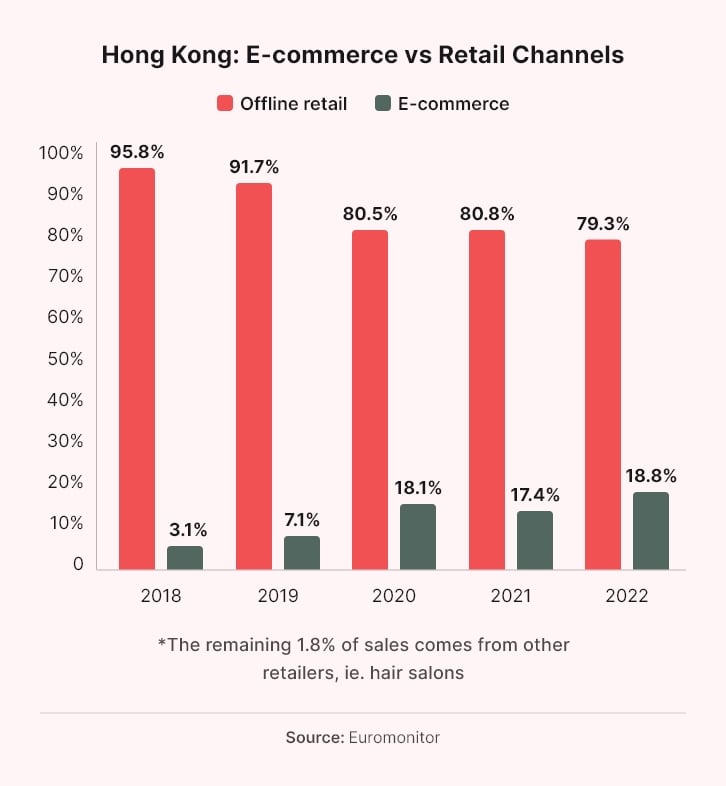
This observation underscores the transformative nature of retail spaces, evolving from mere points of sale to curated destinations that offer memorable experiences to consumers, such as the success of a recent pop-up by L’Occitane.
“Last year, we presented an engaging branding pop-up event called L'Occitane Hotel, which championed the brand's sustainable message while providing an immersive consumer experience. The event attracted 12,000 participants over three weeks and generated more than HK$7 million in earned media value,” said Lui.
Today, Pretti5 is primarily available online with few physical touchpoints including Sephora stores and its occasional pop-ups.
Chau told us the company is not pressured to move offline or open its standalone shop.
“Of course, it’s always better for people to get to try the physical product. But it doesn’t necessarily mean that we must have an actual shop. We have pop-up stores occasionally to meet and communication with our consumer. But how we communicate the brand ethos and product efficacy online would be the key for now.”
Even retailers with an extensive physical network like Sa Sa see the importance of online channels.
“Livestream represents an interesting proposition. While hugely popular in Mainland China, we are finding good traction in Hong Kong as well. It syncs well with our offline business model as we leverage our beauty consultants to introduce products via livestream thereby extending their reach to the online space.”
G&M has also seen an uptick in sales through the online shopping platform HKTVmall in the past three years. However, brick-and-mortar channels continue to be the key channel for its brands.
“In Hong Kong, the distance you have to travel to get to a shop is short. It’s not like China or Australia where you have to get in your car and drive. In a city like Hong Kong, it’s very convenient. So, I think the traditional brick-and-mortar channel is still strong for us,” said Bosevski.
Sa Sa, G&M’s retail partner in HK, reported that its physical retail sales grew by 44.3% year on year while online sales fell by 5.6%. This signalled higher footfall and a preference for shopping in person, at least for now.
“Brands underwent digital transformations during COVID in order to increase online touchpoints and stay relevant. However, offline shopping maintains relevancy for Hong Kong consumers as 63% of Hong Kong respondents shopped beauty and personal care products in-person in 2023,” said Lai, citing Euromonitor’s Voice of Consumer: Lifestyle survey.
Danny Ho, executive director and chief financial officer of Sa Sa International, echoed similar sentiments: “Post-COVID, we have seen a reversion of local consumers back to offline shopping, where the touch and feel experience plays an important role in our product categories”
Moving forward, Sa Sa believes that “digitalisation and online-merge-offline (OMO) will continue to play a significant role in the beauty market.”
Ho said: “Online plays an important role as consumers leverage that medium to gather beauty-related information anytime, anywhere.”
HK: Still the 'gateway' to China?
While the topic of how Hong Kong has changed can be infinitely debated, its role as a key trading port and facilitator of goods between China and the rest of the world remains unchanged.
“Hong Kong still retains its status as a gateway to China due to its strategic location, well-established logistics infrastructure, and familiarity with international business practices. Many beauty companies view Hong Kong as a steppingstone to enter the larger Chinese market, leveraging its connections and expertise,” said Lui.
“It serves as a gateway to the larger Chinese market, providing access to millions of potential consumers. The city's cosmopolitan culture and reputation as a shopping destination further contribute to its appeal as a thriving beauty market.”
Its open trade and investment policies, bolstered by trade agreements and partnerships, attract foreign companies looking to gain access the vast Chinese market.
“Hong Kong has liberal and flexible policies, making it an ideal expansion platform for international brands seeking to establish a presence in the region with a view to tapping into the mainland China market,” said Ho.
“Being close to Mainland China, Hong Kong can reflect changes in consumer preferences and habits, making it an important gateway for brands seeking to enter the mainland China market.”
For smaller, independent brands that are aiming for a slice of the lucrative Chinese market, Hong Kong is the ultimate launchpad given its more relaxed import regulations and lower taxes.
“Hong Kong is the bridge between China and the international market. Not only for its low tax rate environment but also because Hong Kong shares the same platforms as the rest of the world, such as Google, Facebook and Instagram for instance. This means there’s free information flow. Importing is still relatively easier in Hong Kong, so it’s still a very good gateway, especially for indie brands that aim to eventually reach China,” said Chau.
Lai highlighted the success of Cosmoprof Asia’s return to Hong Kong as proof as an “attractive market for beauty as a launching hub for international brands.”
She said: “More brands are expected to establish their presence in the Asian market through launching in Hong Kong, contributing to the further fragmentation of the beauty and personal care market. For example, Japan’s d program, US’s INTROSTEM and Korea’s Glutanex have launched in Hong Kong in 2023.”
Travel industry’s reboot
Today, Hong Kong's beauty industry finds itself at a crossroads between the lingering impact of the pandemic with the promising resurgence of tourism.
“A significant portion of Hong Kong’s beauty market relies on tourist consumption,” said Lai.
“Since the border reopening, Hong Kong as a destination saw a good recovery in tourism especially from key source market – China, benefitting the beauty market as players saw double-digits growth – around 20% – in 2023 compared to 2022, which brings the total market nearing pre-COVID levels.”
The inbound traveller demand remains significant for beauty brands in Hong Kong such as L’Occitane.
“Tourist levels have been significantly impacted since 2019 due to travel restrictions and pandemic-related concerns. However, as travel restrictions are lifted, there is optimism for a recovery in tourist arrivals,” said Lui.
“As travel resumes and restrictions ease, we also expect a resurgence in tourist-driven demand. The resumption of international travel will likely contribute to the revival of the tourism sector and subsequently benefit the beauty market.”
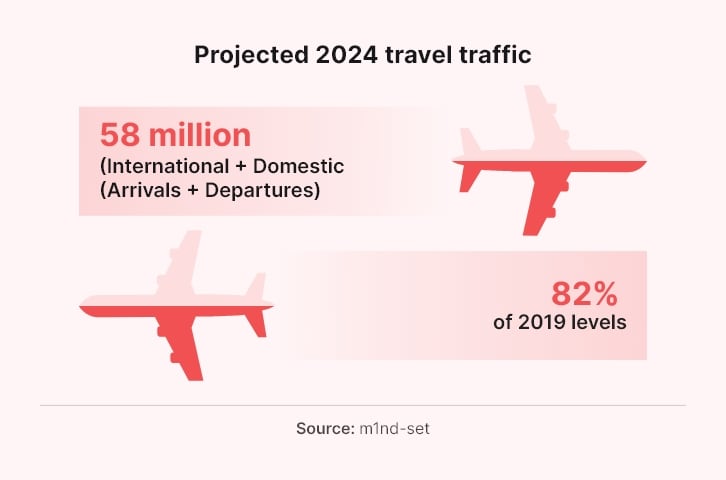
This is especially so for mainland Chinese tourists, which Bosevski credited to G&M’s recent performance surge in Hong Kong. This underscores the importance between travel and retail in the future trajectory of Hong Kong’s beauty market.
“Historically, the mainland Chinese tourists see Hong Kong as a window to the world. They trust that the brands they see on the shelf in Hong Kong in a proper channel like a Sa Sa store. And when they do buy, they don’t just buy one, they buy multiple units,” he said.
According to data from travel market research agency m1ndset, a total of 58 million passengers are expected to come through the city's airports in 2024.
This represents a recovery of up to 82% of 2019’s pre-pandemic levels, a significant milestone for the city’s tourism sector.
Based on 2024 projections, Hong Kong will have a total of 32 million international passengers departing from Hong Kong, representing 79% of 2019 levels. Comparatively, Singapore is set to see 42 million international passengers, representing 109% of 2019 levels.
Within airports, footfalls have decreased compared to pre-COVID. However, passengers who do visit duty-free shops are more likely to make a purchase.
“In 2023, two out of five passengers browsed duty-free shops compared to almost half in pre-COVID. However, those who visit the shops are more likely to convert into buyers – 85% in 2024 vesus 68% pre-COVID,” said Anna Marchesini, head of business development, m1ndset.
As a result, the overall purchase rate has recovered in 2023 since hitting its lowest point in 2021.
“Average spend per duty-free buyer has been decreasing due to COVID. However, it has made a full recovery in 2023 after an all-time low during 2022,” said Marchesini.
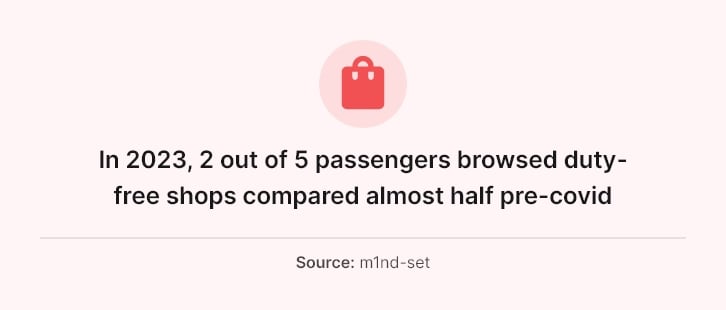
Beauty priorities: Skin health, wellness, and sustainability
Emerging from the pandemic, Hong Kong’s beauty market evolving with new consumer preferences, burgeoning trends, and fierce competition.
As local and international players vying for market share, differentiation becomes paramount, with brands seeking to carve out their niche through innovative strategies and unique value propositions.
“Competition is intense, both from local brands and international players. Customers are choosing less but better. Companies need to differentiate themselves by offering unique value propositions, such as innovative formulations, sustainable branding, personalised experiences, or targeted marketing strategies. Brands need to resonate with consumers with a common value on top of conventional product selling,” said Lui.
Post-COVID, the key trends include the growing demand for skin care products, fuelled by the focus on skin health and wellness.
“Anti-ageing solutions, natural and organic products, and products targeting specific skin concerns are particularly popular,” said Lui.
This focus on health is also pushing consumers to seek out beauty-from-within products.
“Post-COVID, consumers are increasingly health conscious and we have been tapping into this opportunity with our increasing attention to ‘inner beauty’ health-related products,” said Ho.
This is driven also by the belief that beauty begins with health, he added.
“As a result, many beauty companies have introduced nutritional supplements for inner beauty, or wellness products tailored for different beauty and fitness purposes. This trend reflects consumers' pursuit of overall health and beauty.”
Alongside these product demands, Hong Kongers still prioritise product authenticity and ingredient safety. There is also an increasing awareness of sustainability, driving a surge in demand for clean and ethical alternatives.
“Consumers in Hong Kong are increasingly conscious of their environmental footprint and seek out brands that align with their values. L’Occitane Group prioritises sustainability and adopts eco-friendly practices, giving us a competitive advantage in the Hong Kong market.”
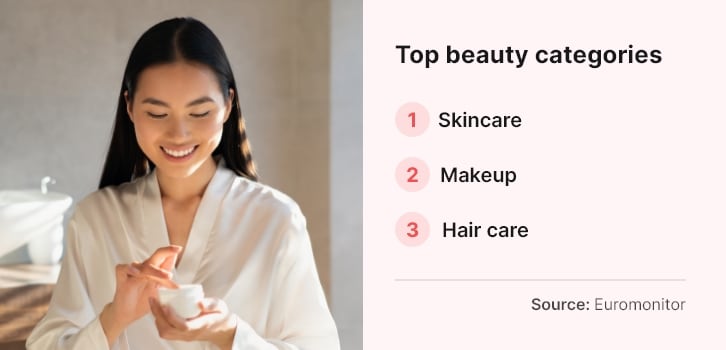
The demand for clean and ethical beauty is not just seen in the luxury segment but on the high street as well.
“Hong Kong consumers have become more discerning, focusing not only on product efficacy and value for money but also on what brands represent, whether products are environmentally friendly, free from pollution or chemical substances, and whether they have been tested on animals. Clean beauty and vegan products are increasingly sought after,” said Ho.
This has prompted Sa Sa to establish dedicated displays for clean beauty and green beauty products, providing consumers with the opportunity to purchase products that align with their values.
Amidst challenges and uncertainties, the Hong Kong beauty market has demonstrated remarkable resilience. As the market continues to recover and evolve, agility, innovation, and a commitment to sustainability will be key differentiators for brands seeking to thrive in the recovery of this vibrant market.



